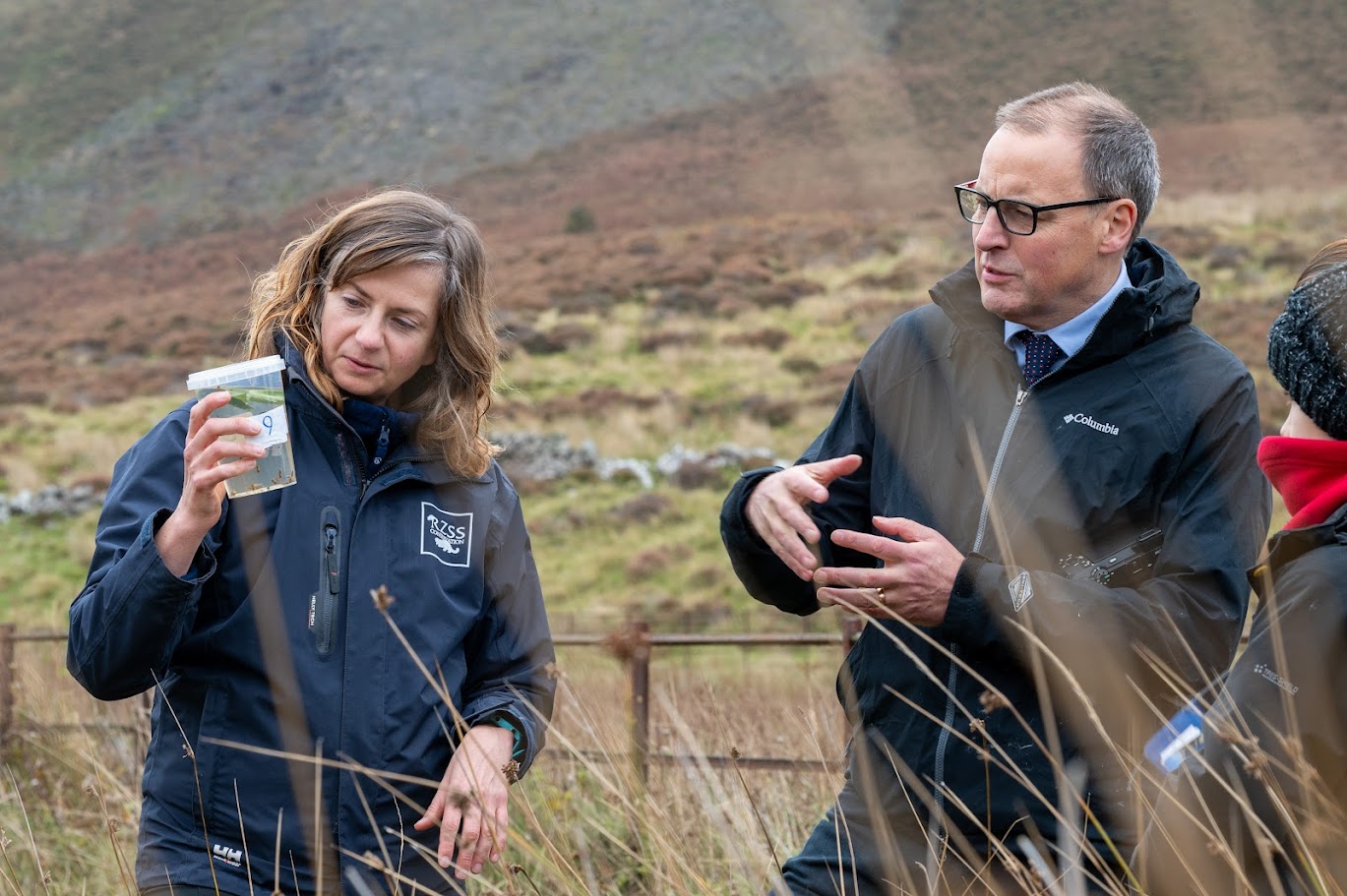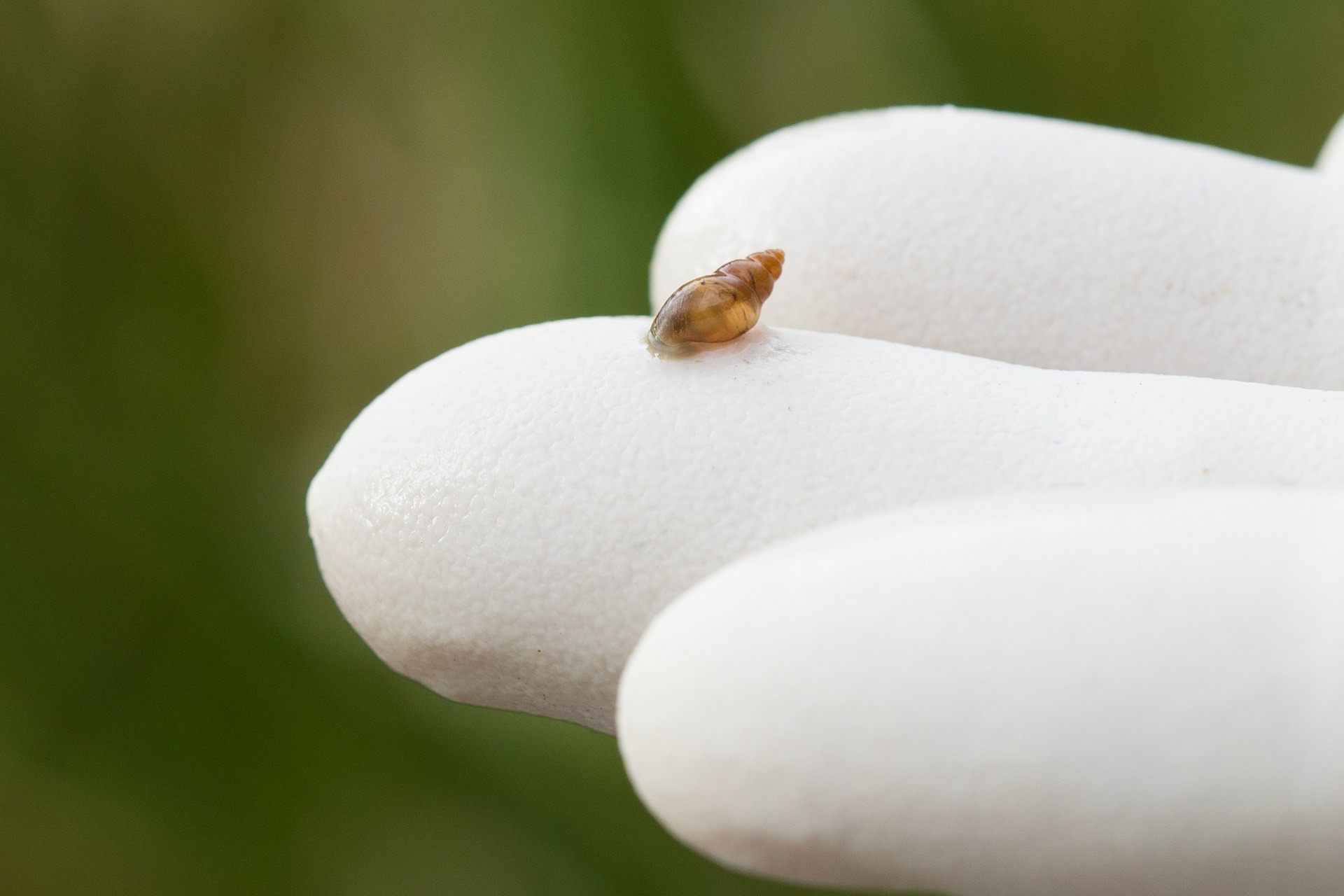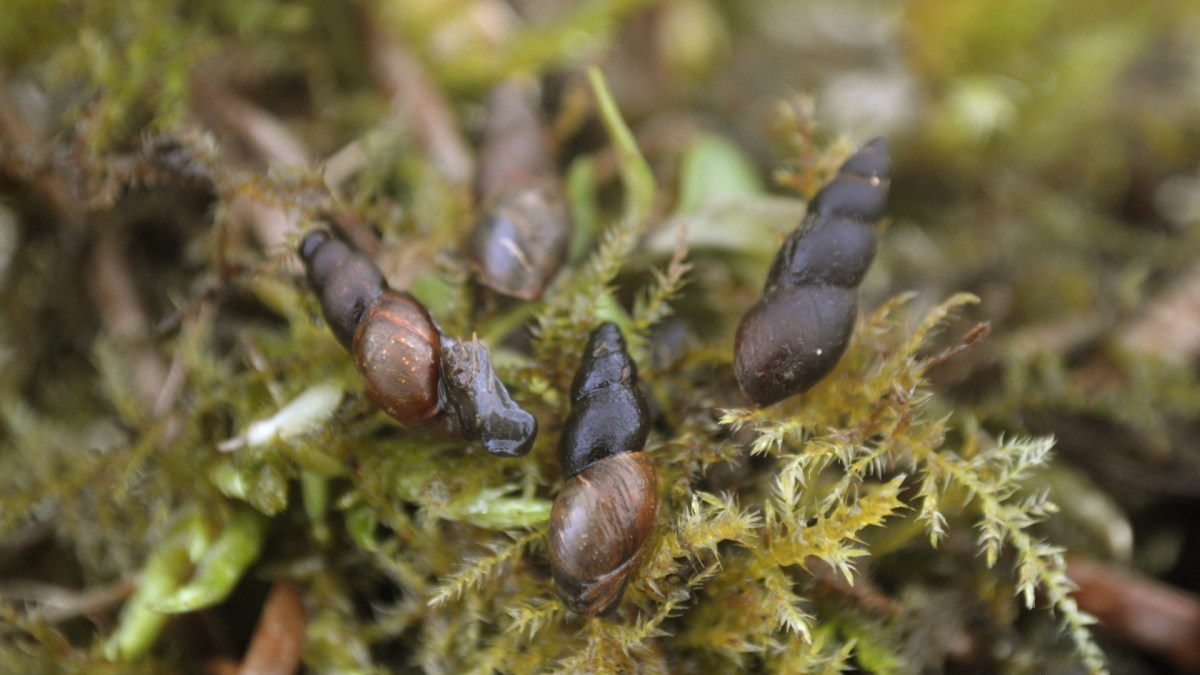High above Scotland’s capital, half a dozen naturalists are hiking across a bog carrying old plastic soup containers full of snails, some the size of grains of rice.
The team, from the charity that runs Edinburgh Zoo, are carrying out Scotland’s latest — but also tiniest and slowest — rewilding project.
As the sun rises to its peak, the experts find a spot where this species had not been seen for decades. They lovingly swill their containers and pour pond mud snails into a marsh at Black Springs, near Balerno in the Lothians.
The Royal Zoological Society of Scotland (RZSS) is “standing up for the little guys”.
And the guys really are little. The tiniest babies are painstakingly picked up on the tip of a paint brush and placed into the muddy water.
Scotland has already reintroduced animals as diverse as sea eagles and beavers and some people want to bring back bigger species, such as lynx and wolves. But the RZSS also likes to think small.
“We love big fluffy species like wild cats and beavers, and it’s important to have those back in the environment, but animals like pond mud snails do important work in the environment as recyclers or as part of a food web,” said Helen Taylor, its conservation programme manager.

Helen Taylor and the local MP Scott Arthur are part of the rewilding team
RZSS
“If we don’t look after the tiny species that nobody is thinking about, we won’t have the healthy ecosystems we need to put the big fluffy species into.”
Bringing pond mud snails home has not been easy. The release, late last week, was the culmination of years of work.
It all started deep in the archives of the National Museum of Scotland with a pot of small, cone-shaped snail shells.
For decades their origin was almost a complete mystery. There was just one clue: a label dated 1931 saying that the specimens came from a place called “Bavelaw Moss” near Balerno in the Pentland Hills. There is no such place. It turns out the collector, AR Waterston, who was from Shetland, had mixed up the location.
Once there would have been pond mud snails with shells like these in ditches, marshes and gullies across Scotland, but now they are rare.

For years, ecologists hunted unsuccessfully in the Red Moss bog, Bavelaw, for snails like Waterston’s.
Clive Walton, an RSPB ecologist for the south and west of Scotland, grew up in Balerno and did some of the detective work to find where the animals should be rehomed.
“Contemporary people said the moss at Bavelaw must mean Red Moss, and they went looking in the wrong place,” he said. “But I knew there’s no such place as Red Moss really, and if AR Waterston is talking about anything in Bavelaw, it was going to be Bavelaw Marsh.”
In the spring of 2017, Walton went up to the marsh. He searched for two days in the rain, scooping up marsh water with his gloves. Only on the second day did he find the tiny, elegant, spiralled shells of the pond mud snail.
Eight years later and the snails are coming home to the Pentlands en masse. The RZSS released 3,000 pond mud snails across three spots in the Pentland Hills, all descendants of the group, or “walk”, of snails discovered by Walton.
The RZSS bred the snails at its Highland wildlife park. This proved fairly straightforward: the animals are self-sufficient hermaphrodites, who produce hundreds of baby snails if coaxed with a supply of pak choi — dutifully bought in supermarkets for them by the RZSS. The eggs are laid in “rafts” of sticky jelly filled with baby snails.

In the bog near Balerno, experts and volunteers worry about predators, but also about treading on their newly released snails.
Scott Arthur, the Labour MP for Edinburgh South West, is among those releasing the animals in his constituency.
“I took the view that the snails were quite keen to get back in the pond and there was no point messing around,” he says. “I did take the bigger ones out, but the smaller ones I mostly just swirled around. Hopefully I didn’t stand on anything.”
Will they live? Taylor believes survival is a “numbers game”. Most of the babies will be eaten, she says, but even if only 20 or 30 survive they’ll be able to maintain the population.
Adam Button, an experienced animal keeper for the RZSS, has spent the week painstakingly counting thousands of tiny snails, of whom only 150 will be kept in their tanks.
‘It’s really exciting,” he says. “It’s just lovely to be able to put them out here after so many years.”

